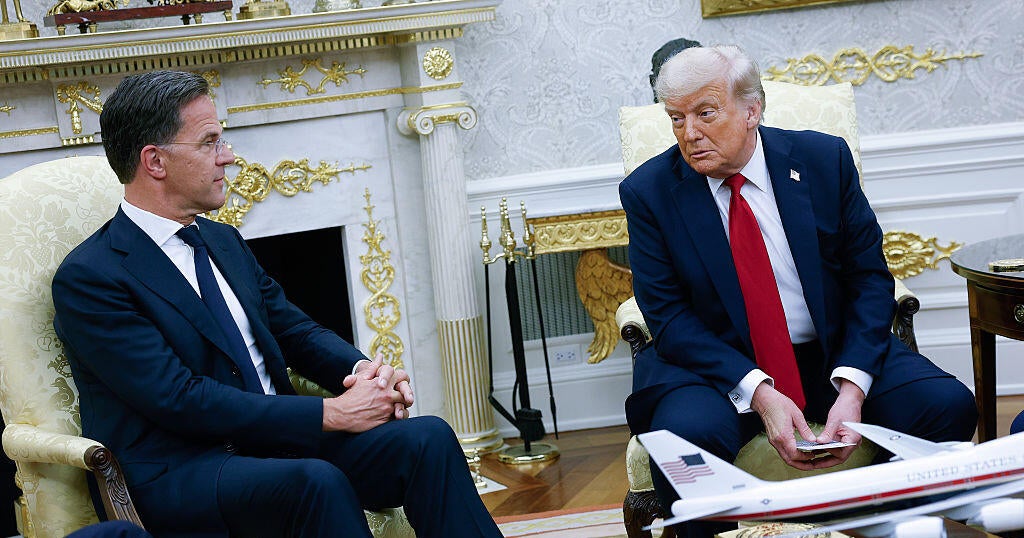In a recent announcement, the U.S. government revealed its intention to impose 100% tariffs on countries engaging in trade with Russia if there is no peace deal regarding the ongoing war in Ukraine within the next 50 days. President Trump articulated his frustration with Russian President Vladimir Putin during a meeting with NATO Secretary General Mark Rutte, emphasizing the urgent need for decisive actions over mere dialogues. The comments came alongside news of a new arms deal between the U.S. and NATO allies aimed at supplying Ukraine with much-needed military support amid the ongoing conflict.
| Article Subheadings |
|---|
| 1) Imposition of Tariffs on Countries Engaging with Russia |
| 2) Arms Deal to Support Ukraine |
| 3) Frustration with Diplomatic Efforts |
| 4) Congressional Pressure for Stronger Sanctions |
| 5) Historical Context of Seizing Foreign Assets |
Imposition of Tariffs on Countries Engaging with Russia
In an escalated response to the ongoing conflict in Ukraine, President Trump announced that the U.S. plans to implement a series of secondary tariffs amounting to 100% on countries continuing to conduct business with Russia. This stipulation comes with a strong caveat; should there be no peace deal reached in the next 50 days, this punitive action will be enacted. During his remarks in the Oval Office, Trump made it clear: “We’re going to be doing secondary tariffs if we don’t have a deal within 50 days. It’s very simple.” This decision underlines a growing impatience with Russia’s actions and aims to apply significant economic pressure on allies of the Kremlin.
Arms Deal to Support Ukraine
In a strategic move to assist Ukraine amid its military struggle against Russian aggression, the U.S. has concluded a deal to sell weapons to NATO member nations. These countries will then supply Ukraine with the arms needed to replenish their dwindling military stockpiles. Although the Pentagon had recently paused some weapon shipments to Ukraine, Trump’s decision reflects a commitment to ensure that Ukrainian forces are well-equipped. “We’ve made a deal today where we’re going to be sending them weapons and they’re going to be paying for them,” he stated, reiterating the financial aspect of the arms transaction where European nations would be responsible for the costs.
Frustration with Diplomatic Efforts
Trump’s recent statements also reveal a mounting frustration towards his communications with Russian President Vladimir Putin. Having had multiple conversations since taking office, Trump expressed skepticism regarding the efficacy of these discussions, indicating that they often end without tangible outcomes. “Ultimately, talk doesn’t talk, it’s got to be action, it’s got to be results,” he remarked. This sentiment underscores a significant shift in his approach—calling for proactive measures instead of relying solely on diplomatic dialogue, which he sees as ineffective due to ongoing military actions by Russia.
Congressional Pressure for Stronger Sanctions
The legislative branch has also been vocal about the need for stronger actions against Russia. Senator Lindsey Graham is advocating for new legislation that would empower the president to impose tariffs of up to 500% on countries aiding Russia. This so-called “sledgehammer” would enhance the U.S. ability to economically cripple Russia’s support system. Graham’s perspective highlights a bipartisan urgency to confront the ongoing conflict decisively, emphasizing that “we’re going after the people who keep Putin in business” as a central tenet of the proposed strategies.
Historical Context of Seizing Foreign Assets
No American president has ever officially seized sovereign foreign central bank assets from a nation that the U.S. is not in direct conflict with. This context frames the discussions currently taking place, as former U.S. officials have pointed out the precariousness of such actions. Although the Biden administration initially refrained from using such authority due to potential backlash in European banking systems, the conversation is turning towards practical solutions that could assist Ukraine financially. Some lawmakers are now urging to convert seized assets into a trust fund specifically aimed at benefiting Ukraine during this pressing time.
| No. | Key Points |
|---|---|
| 1 | The U.S. plans to impose 100% tariffs on countries that engage in business with Russia if no peace deal is reached within 50 days. |
| 2 | A new arms deal has been established where NATO allies will procure weapons to supply Ukraine. |
| 3 | President Trump expressed his frustration with ineffective diplomatic calls with President Putin. |
| 4 | Congress is pushing for stronger sanctions, with proposals allowing tariffs up to 500% on nations aiding Russia. |
| 5 | There is a historic aspect concerning the seizure of foreign assets, with lawmakers considering converting them into support for Ukraine. |
Summary
The current situation surrounding the conflict in Ukraine and its international implications has prompted significant action from the U.S. on various fronts, including the potential implementation of high tariffs and a new arms deal with NATO allies. President Trump’s remarks underscore the urgency felt by U.S. leaders as they navigate diplomatic channels while also calling for more decisive action against Russia. The unfolding events indicate a robust legislative push to enhance sanctions and provide support to Ukraine, marking a critical juncture in international relations concerning the ongoing crisis.
Frequently Asked Questions
Question: What are secondary tariffs?
Secondary tariffs are imposed on countries that trade with an entity that is already under sanctions, intended to place additional economic pressure on that entity.
Question: How will the arms deal affect Ukraine?
The arms deal will enable Ukraine to replenish its military stockpiles, enhancing its ability to defend itself against Russian aggression.
Question: Why is President Trump frustrated with Russia?
Trump expresses frustration due to the lack of tangible outcomes from diplomatic conversations with Putin, which he feels do not lead to substantial action to resolve the conflict.


